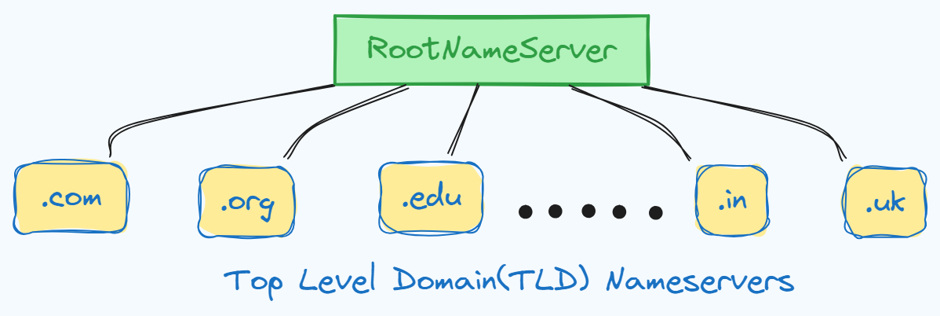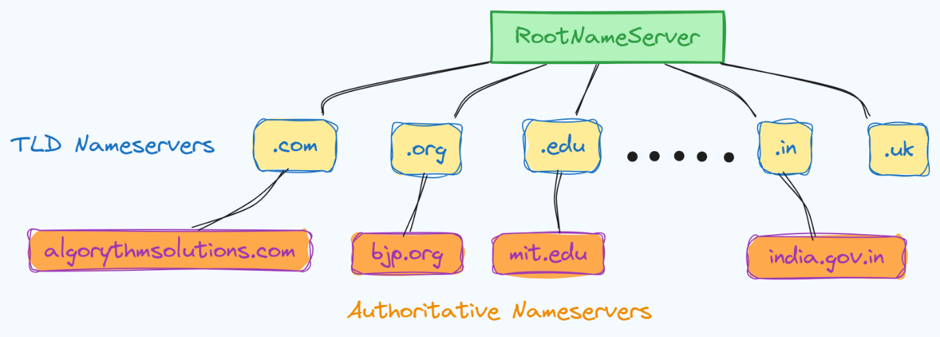
Ever wonder how the website algorythmsolutions.com appears out of nowhere when you only type its address into your browser? The Domain Name System (DNS), also known as the Internet’s backbone, is the key to this everyday convenience.
Imagine a library catalogue (domain names) with a user searching for a book (website) on a massive bookshelf (the internet). Librarians (DNS servers) assist the user in finding the right book.
Domain Name System is the internet’s directory (similar to a database). It converts human-readable domain names (such as algorythmsolutions.com) into machine-readable IP addresses. This process is called DNS resolution. Without DNS, we would need to remember the numerical IP addresses of all our favourite websites, which is far less convenient than using simple, memorable domain names.
What Does DNS Do?
It may appear like DNS is only responsible for maintaining a database of names and IP addresses, and only one DNS server could be enough for DNS resolution. But a single server means a single point of failure. It must be a distributed system to keep it fast, secure and scalable. Also geographically closer servers will provide faster results.
When a browser sends a DNS query, it contacts a DNS resolver. This DNS resolver can be provided by our ISP (Internet Service Provider) or a major DNS provider such as Cloud Flare’s 1.1.1.1 or Google’s 8.8.8.8.
If the DNS resolver does not have the answer in its cache, it contacts the appropriate authoritative nameserver and requests the information. The authoritative nameserver is the one that holds the response.
When we update a domain’s DNS records, we also update its authoritative nameserver.

Deep Dive: Locating The Authoritative Nameserver?
There are three types of DNS Nameservers, the DNS Resolver will consult them in order to Resolve the Fully Qualified Domain Name.
1. Root Nameserver

Root Nameservers operates at the very top of the hierarchy. These answers two types of Queries cached and uncached. Uncached queries respond with address of the Top Level Domain(TLD) Name servers based on the top-level domain (.com, .org, .net, etc.).
For example, if the query is for www.example.com, the root server will direct the resolver to the .com TLD name servers.
There are around 13 Address for Root Nameservers worldwide based on original Domain Name System architecture. That doesn’t conclude that there are inly 13 Root servers, each IP address will have its own multiple servers distributed globally. And nearest root server is assigned to our query based on our location.
2. Top Level Domain (TLD) Nameserver

TLD nameservers play a crucial role in managing domain names with common extensions like .com or .net. Managed by Internet Assigned Numbers Authority(IANA), they are divided into generic top-level domains (e.g., .com, .org) and country code top-level domains (e.g., .uk, .us). Additionally, there’s a third category for infrastructure domains, although it’s seldom utilized.
3. Authoritative Nameserver

Upon receiving a response from a TLD nameserver, a recursive resolver is directed to an authoritative nameserver. This authoritative nameserver is the final destination for the resolver in obtaining an IP address.
The servers store Domain Name System records for the domain, including A records (for IPv4 addresses), AAAA records (for IPv6 addresses), MX records (for mail servers), and others. For instance, when queried for www.example.com, the authoritative name server for example.com might return the IP address 93.xxx.216.34.
Conclusion
Although we may not directly interact with Domain Name System, it is critical to our online activity. The next time you easily surf a website, take a moment to recognise the invisible yet dedicated Librarian – the DNS that works tirelessly behind the scenes.


